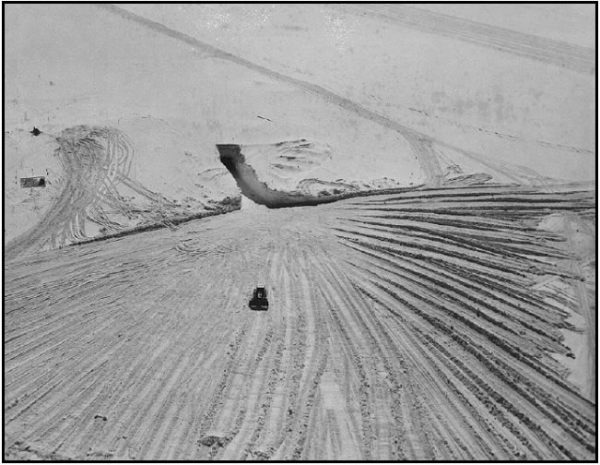Aug 5 2016
Climate change is threatening to expose hazardous waste at an abandoned camp thought to be buried forever in the Greenland Ice Sheet, new research out of York University has found.
 The northeast portal to Camp Century in 1964, shortly before the base was abandoned. (credit: US Army)
The northeast portal to Camp Century in 1964, shortly before the base was abandoned. (credit: US Army)
Camp Century, a United States military base built within the Greenland ice sheet in 1959, doubled as a top-secret site for testing the feasibility of deploying nuclear missiles from the Arctic during the Cold War. When the camp was decommissioned in 1967, its infrastructure and waste were abandoned under the assumption they would be entombed forever by perpetual snowfall.
“Two generations ago, people were interring waste in different areas of the world, and now climate change is modifying those sites,” said William Colgan, a climate and glacier scientist at York U and lead author of the new study. “It’s a new breed of climate change challenge we have to think about.”
The study was published today in Geophysical Research Letters, a journal of the American Geophysical Union.
Climate change has warmed the Arctic more than any other region on Earth and the new research has found that the portion of the ice sheet covering Camp Century could start to melt by the end of the century. If the ice melts, the camp’s infrastructure, as well as any remaining biological, chemical and radioactive waste, could re-enter the environment and potentially disrupt nearby ecosystems, say the study’s authors. The wastes would not remain encased in ice forever, as was assumed by both the US and Denmark when the camp was abandoned. Determining who is responsible for cleaning up the waste could also lead to political disputes not considered before, said Colgan.
The study’s team took an inventory of the wastes at Camp Century and ran climate model simulations. The researchers also analyzed historical US army engineering documents to determine where and how deep the wastes were buried and how much that part of the ice cap had moved since the 1960s. They found the waste at Camp Century covers 55 hectares, roughly the size of 100 football fields.
They estimate the site contains 200,000 litres of diesel fuel, enough for a car to circle the globe 80 times, and 240,000 litres of waste water, including sewage. Based on building materials used in the Arctic at the time, the authors speculate the site contains polychlorinated biphenyls (PCBs), pollutants toxic to human health, along with an unknown volume of low-level radioactive coolant from the nuclear generator.
Camp Century’s waste presents a non-trivial environmental hazard, said Colgan. When the ice melts, pollutants could be transported to the ocean, where they could disrupt marine ecosystems.
“When we looked at the climate simulations, they suggested that rather than perpetual snowfall, the site could transition from having a buildup of snow to having primarily melting conditions as early as 2090,” Colgan said. “Once the site transitions from net snowfall to net melt, it’s only a matter of time before the wastes melt out; it becomes irreversible.”
The assumption that any waste could be buried forever under ice is unrealistic, said James White, a climate scientist at the University of Colorado in Boulder, who was not connected to the study.
“The question is whether it’s going to come out in hundreds of years, in thousands of years, or in tens of thousands of years,” White said. “This stuff was going to come out anyway, but what climate change did was press the gas pedal to the floor and say, ‘it’s going to come out a lot faster than you thought’.”
Rather than start remediation now, Colgan said, “It really becomes a situation of waiting until the ice sheet has melted down to almost expose the wastes that anyone should advocate for site remediation.”
But the study does raise questions about who is responsible for cleaning it up when it is exposed. The implications of climate change on politically ambiguous abandoned waste, was something not taken into consideration at the time the camp was built.
International law is clear about responsibility for preventing future hazardous waste, but ambiguous about who is liable for waste already discarded, said Jessica Green, a political scientist specializing in international environmental law at New York University who was not connected to the study. Although Camp Century was a US base, it is on Danish soil, and although Greenland is a Danish territory, it is now self-governing, she said.
Videos:
William Colgan talks about the research:
https://www.youtube.com/watch?v=tApPuqMO1rM&feature=youtu.be
Walter Cronkite reports on Camp Century in 1961, on assignment for "The Twentieth Century," a former CBS documentary show:
http://www.cbsnews.com/news/60-minutes-overtime-cronkite-visits-city-under-the-ice/